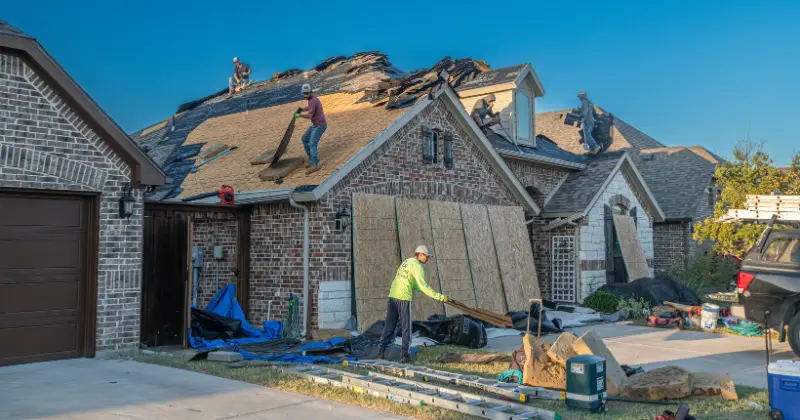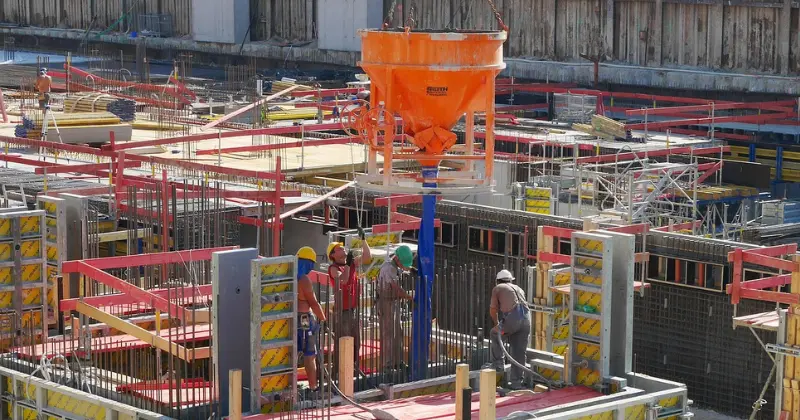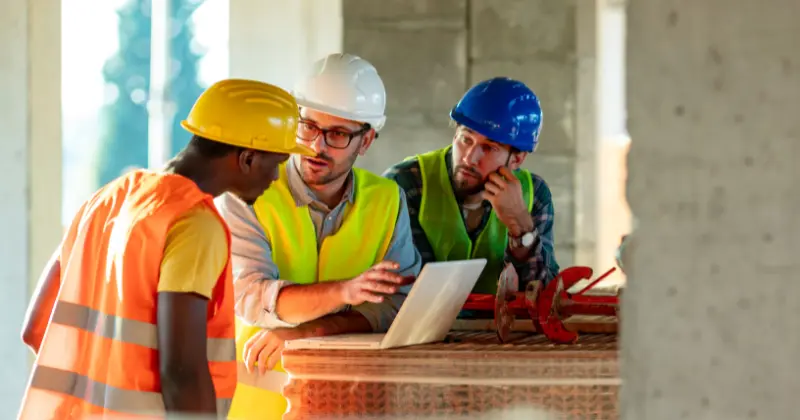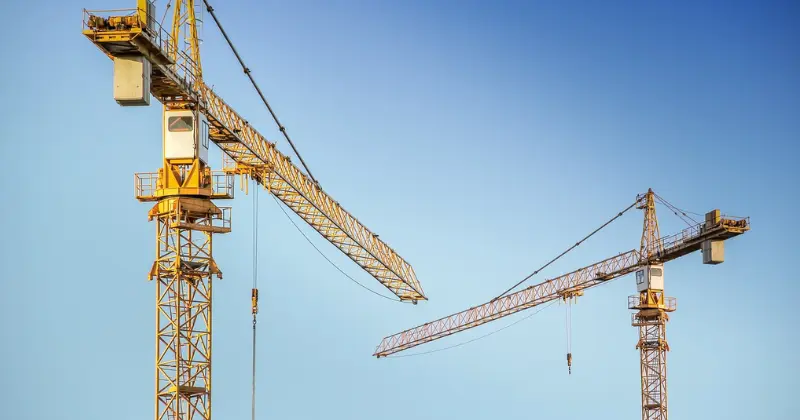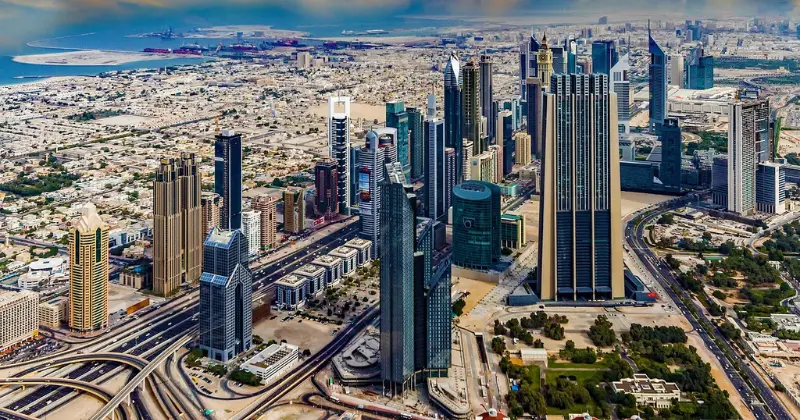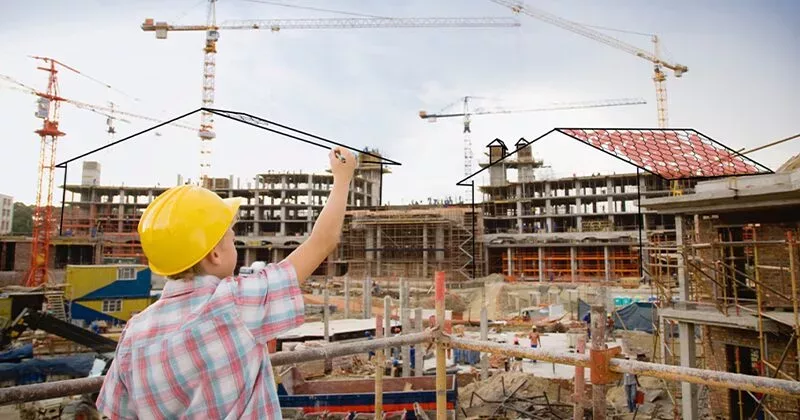11 mins read
Construction Site Basics: Key Definitions, Roles, and Best Practices

Scaffolding, hard hats, and heavy equipment are some of the objects that make it easy to identify a construction site. Beyond these obvious signs, each location has unique objectives and constraints that all project teams, clients, and even visitors should understand. A recap of basic definitions and key principles is a great place to start.
In this blog post, we define the various types of construction sites and the roles, responsibilities, and key considerations of each. We also review some best practices that help every site operate more smoothly.
What Is a Construction Site?
A construction site is a piece of land or an indoor setting where physical construction activities take place. Through a variety of complex processes and cross-functional tasks, each site eventually becomes a finished product that is enjoyed by its owners or occupants.
Turning a piece of land into a construction site is a step-by-step process that begins with surveying, site preparation, and excavation efforts to ensure obstacles have been removed so workers and vehicles can operate safely. As the physical transformation begins, environmental, zoning, and security issues must also be carefully considered to establish a suitable working environment.
Construction sites vs. building sites
The terms “construction site” and “building site” are sometimes used interchangeably, but building sites typically involve housing developments, apartments, office complexes, and other occupied structures. At the same time, construction sites also include roads, tunnels, power plants, and many other project types. Remodeling, repair, and restoration efforts that often begin with evacuation and demolition activities are also considered active construction sites.
Types of Construction Sites

Projects and locations are generally classified as either building, infrastructure, or industrial in nature, but beyond these basic categories, there is an endless variety of features and environmental conditions that make each one different. Rules and practices have evolved around the most common types of construction sites to prevent disputes and streamline workflows as projects progress.
Residential
A residential construction site is one where housing units such as apartments, condominiums, or individual homes are being built. Facilities that are built to support housing communities, such as swimming pools, clubhouses, and playgrounds, also fall into the residential category. The International Residential Code (IRC) was created to provide minimum requirements for quality, public health, and safety. A large residential building site with multiple units and common infrastructure is also considered a commercial site.
Commercial
Commercial construction is another broad category that includes office buildings, retail stores, and other structures intended for large-scale public or private use. Commercial sites are typically larger than residential sites, requiring more time and resources for clearing, excavation, and landscaping activities. Traffic management and accessibility are important considerations for commercial construction sites, both during and after the project.
Industrial
Industrial construction sites, including factories, distribution centers, and computer data centers, share many of the characteristics of commercial sites, with their large facility footprints and complex water, gas, and electrical systems. However, unlike commercial sites designed to cater to large crowds of people, many industrial sites are found in remote locations where ample land is still available for projects like mega-factories and hyperscale data centers.
Heavy construction
Complex, large-scale projects that require specialized resources, labor, or machinery fall into the heavy construction category. This includes public infrastructure projects like roads, bridges, tunnels, and dams, along with airports, levees, and other construction sites requiring specific training, equipment, and safety precautions. The word heavy pertains to the powerful equipment used on these sites, as well as the objects moved and formed using this specialized machinery.
Waste management
Urban centers around the world maintain waste management plants to control sewage and limit land and waterway pollution. The complex plumbing and sewerage systems of waste management sites present health, safety, and environmental challenges that are unlike most other construction sites. Everyone involved with these projects should be well informed on local waste handling and disposal regulations, as well as the required safety precautions and personal protective equipment (PPE).
Power generation
Construction sites supporting hydroelectric, wind, and solar energy production often involve large geographic areas and specialized techniques not encountered on typical residential or commercial sites. High voltage wiring, strict land use regulations, and remote locations are among the factors that must be carefully considered before the project commences. With renewable power consumption growing and solar panel installation increasing at a rate of 29% per year worldwide, it is important for all construction professionals to become familiar with the latest power generation standards.
Oil & Gas
As renewable energy production expands, less new oil and gas infrastructure is planned, but legacy pipelines, refineries, coal mines, and other systems still require ongoing monitoring and maintenance. Large teams support and protect energy sources by ensuring that fires, explosions, or security issues do not interrupt production. Fossil fuel infrastructure around the world has been a frequent target for terrorism and sabotage, so access controls and remote monitoring systems for oil and gas sites continue to evolve.
Roles on Construction Sites
All stakeholders involved in a construction project play a part in keeping the site secure, functional, and safe. This includes the contractors, subcontractors, and equipment operators who ensure tasks are completed in a safe and timely manner, as well as the project managers, construction architects, and engineers who consider the unique characteristics of each site as they create or improve buildings and infrastructure.
The construction manager (CM) uses their knowledge and experience to oversee all aspects of the project from groundbreaking through completion, which also gives them primary responsibility for site management. The CM ensures proper health and safety precautions are in place, helps to secure permits, and verifies the right equipment, materials, and personnel are on-site at the appropriate times.
Construction Site Basics

The various types of construction sites found around the world create unlimited opportunities for learning and growth. Despite this variation, all projects benefit from logical best practices that ensure team objectives are consistently met.
1. Equipment management
Residential, commercial, and industrial construction sites all involve the use, storage, and maintenance of many different types of equipment and machinery. Equipment management and training practices are especially important for large tower cranes, excavators, and bulldozers that can lead to potential construction hazards. Still, even handheld power tools should be tracked and maintained to avoid equipment loss or failures.
2. Health and safety
Maintaining a safe construction site is always the most important objective. Signage is one important key to worker safety, with signs clearly pointing out hazardous areas to avoid, as well as emergency equipment, fire extinguishers, and first aid kids. PPE is also essential for job site health, safety, and accident prevention. Training and regular site inspections ensure all workers and visitors have the correct PPE for their specific role and location.
3. Worker amenities
For weeks, months, or even years, construction sites become temporary workplaces for teams that need amenities and services to feel comfortable and perform at a high level. Basic amenities like restrooms, changing rooms, showers, and parking areas should be created with cleanliness, convenience, and portability in mind. Access to fresh water and dining facilities is also mandatory to prevent dehydration or unnecessarily long break periods in industrial settings.
4. Training
Training requirements vary for the many types of construction sites, and the countries, companies, and other factors involved, but all employees must complete required site-specific training before beginning work. Safety, PPE, and emergency response training courses always top the list of requirements, but additional training for heavy equipment operation, basic rigging, and fall protection might also apply, depending on the project.
5. Construction software
As advanced, cloud-based construction software platforms become the norm rather than the exception, using specialized tools has become an integral part of site management. Mobile-friendly software, like RIB Connex, allows teams to capture vital equipment, safety, and project status information in real time while continuing to collaborate with stakeholders both on and off the job site.
Other software solutions like RIB Candy make scheduling and resource utilization updates readily available for construction managers, contractors, and clients, ensuring smooth communication between site and administrative tasks.
Conclusion
Construction sites are where months or years of planning, development, and innovation finally come to life. Dedicated teams, advanced equipment, and meticulous planning are supported by construction software tools that enhance job site communication and efficiency.
RIB Software offers a range of construction software solutions designed to make essential tasks like estimating, scheduling, bid management, and procurement easier, supporting collaboration and data-driven decision-making for efficient site management.
Join the thousands of companies around the world who trust our solutions to improve their construction site monitoring, safety, and execution, and get your free demo of RIB’s toolkit today!
Most Recent
11 mins read
10 mins read
10 mins read
29 mins read
Blog Categories

Ebook




